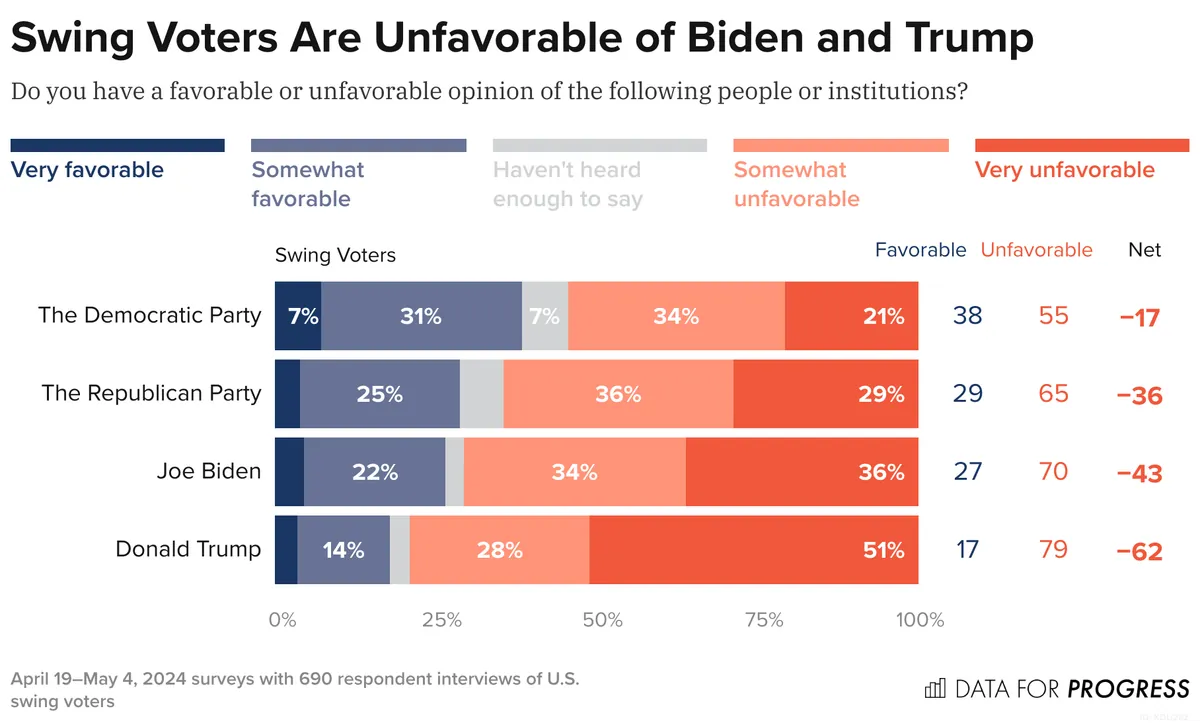In the lead-up to the November 2024 US presidential election, a recent Pew Research Center poll has shed light on Americans' perceptions of how policies proposed by potential candidates Donald Trump and Kamala Harris might affect various population groups. This analysis reveals intriguing insights into voter expectations and the complex dynamics of political messaging.
The United States, with its long-established two-party system dominated by Democrats and Republicans, has seen increasing political polarization in recent decades. This divide is reflected in how candidates present their policies and how voters interpret them. The poll results demonstrate that Americans have nuanced views on who would benefit from each candidate's election, often diverging from the candidates' own rhetoric.
Respondents were asked to evaluate whether different groups would be better or worse off under a Trump or Harris administration. The net responses—calculated by subtracting negative perceptions from positive ones—provide a clear picture of how Americans differentiate between the two candidates' potential impacts.
Trump's policies were perceived as more likely to benefit wealthy individuals, White people, and men. In contrast, Harris's policies were viewed as potentially more advantageous for women and, to a lesser extent, other demographic groups. This perception aligns with the fact that the United States has never had a female president, and Harris's position as the first woman Vice President has already broken significant barriers.
Interestingly, these perceptions persisted even when the poll results were broken down by supporter groups. Harris supporters, for instance, were more inclined to believe her policies would negatively impact the wealthy. Conversely, Trump supporters acknowledged that his policies might benefit the rich. This alignment suggests that voters are aware of the potential consequences of their preferred candidate's policies, even when those consequences might not align with their personal interests.
The poll also revealed some notable exceptions to the general trend of supporters favoring their candidate's policies. Trump supporters, for example, were less likely to say his policies would benefit women compared to Harris supporters' views of her policies. Similarly, Harris supporters didn't overwhelmingly state that Trump's policies would be detrimental to White people or men.
These nuanced perceptions reflect the complex nature of American politics, where factors such as gerrymandering, swing states, and voter ID laws can significantly influence electoral outcomes. Moreover, the increasing role of social media in political campaigns and the influence of Super PACs in campaign financing add layers of complexity to how voters form their opinions.
The dichotomy presented by the poll results is particularly striking: Harris's policies are perceived as beneficial for women by about half of Americans, while two-thirds believe Trump's policies would favor the wealthy. This contrast is especially noteworthy given that women make up slightly more than half of the US population, while the top 1% of Americans hold about 32% of the country's wealth.
Despite these stark differences in perceived policy impacts, polling continues to suggest a very tight race. This competitiveness underscores the multifaceted nature of voter decision-making, which goes beyond simple demographic considerations or policy perceptions.
As the election approaches, it's crucial to remember that these perceptions are often based more on candidates' overall messaging and supporter demographics than on specific policy proposals. The challenge for voters will be to look beyond rhetoric and carefully consider the potential real-world impacts of each candidate's policies.
With voter turnout in US presidential elections typically ranging from 50% to 60% of eligible voters, the outcome of the 2024 election may well hinge on how effectively each candidate can communicate their vision and convince voters that their policies will indeed benefit the broader American populace.
